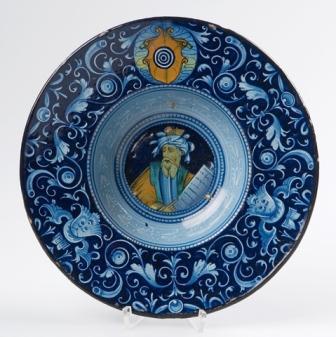Recommendation
In a letter dated 13 December 2012, the Minister for Education, Culture and Science (abbreviated to OCW in Dutch) requested the Restitutions Committee (hereafter referred to as: the Committee) for advice regarding the application of 19 November 2012 by XX of Y, Switzerland (hereafter referred as: the applicant) for the restitution of three ceramic dishes from the Netherlands Art Property Collection (NK collection). These objects are:
- NK 223, Glazed pottery dish with polychromed decor of bust of a prophet and grotesques on the rim (Italy, 17th century);
- NK 444, Glazed pottery dish with polychromed decor with rosette and arabesques (Spain, 16th century);
- NK 575, Glazed pottery dish with polychromed decor of female bust (Italy, 16th century).
